LEFKOSIA/NICOSIA: One city, the Capital of Two Countries
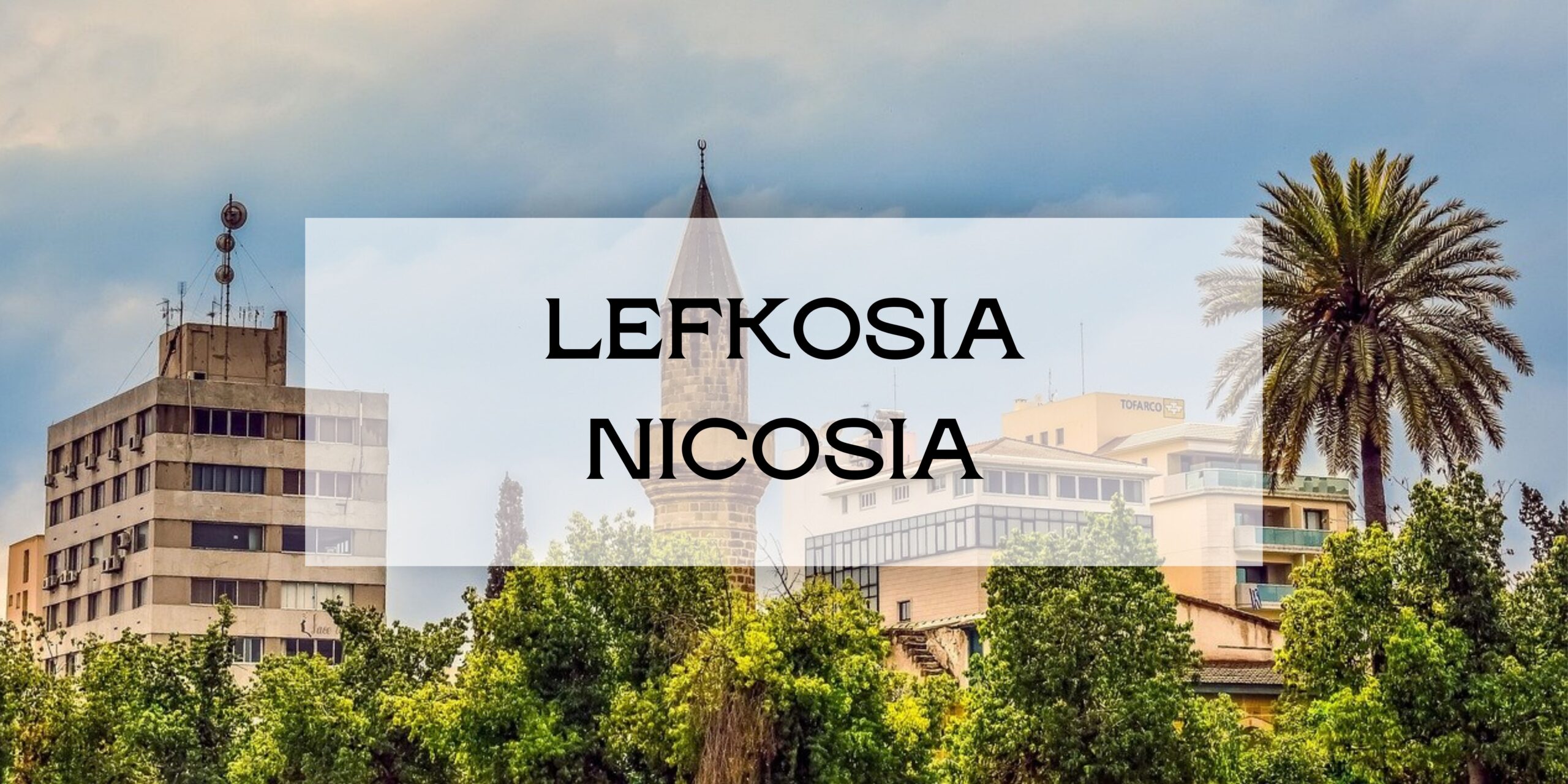
Lefkosia/Nicosia
The capital city of Cyprus is unique: it is the only capital in the world located in two countries. Its official name is Lefkosia (Λευκωσία), but it is also known as Nicosia.
Walking in the capital’s streets, we often stumble upon something like this.
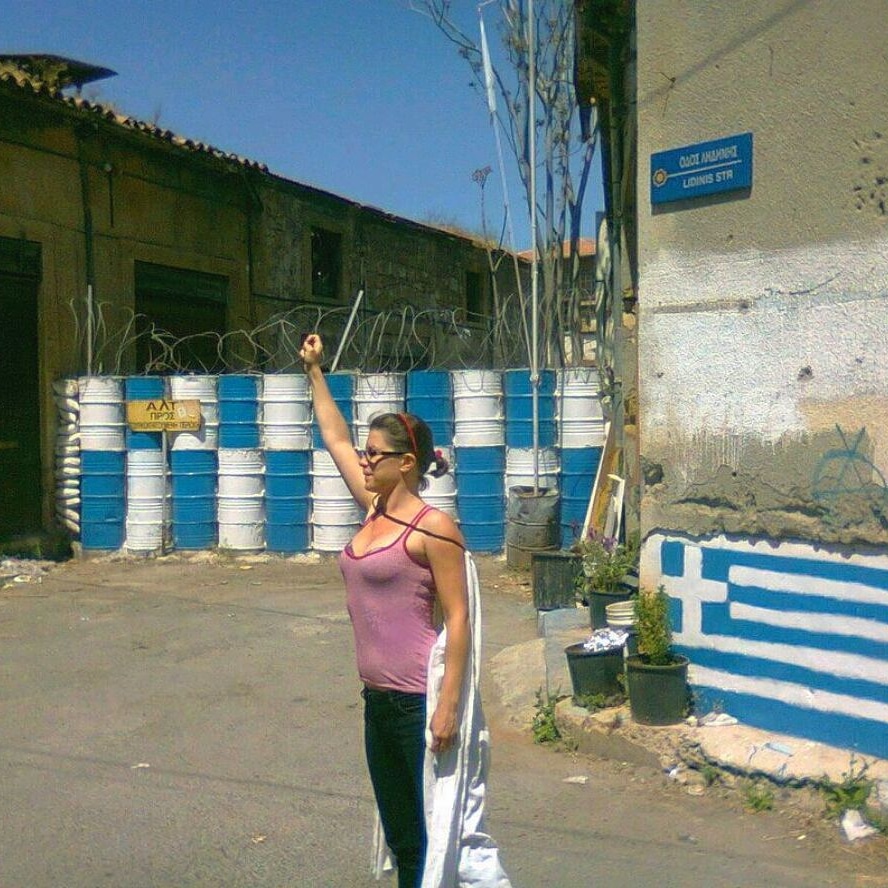
The barrels painted in the color of the Greek flag show the actual border between the two countries.
This site contains affiliate links to products, and I may receive a commission if you make a purchase through my links at no cost to you. Please read my disclosure for more info.
Walking in the streets of the capital of Cyprus
As you stroll on the main street of Lefkosia, you will notice that it is not very different from any other pedestrian street in any other city. You will walk by souvenir stores, fash fashion retailers, bookstores, cafés. And a border.
Then, you will pull out your passport and get a stamp in the middle of the pedestrian street at the border. 10 meters further, you are in the Turkish Republic of Northern Cyprus.
As you continue strolling, you will pass more restaurants and clothes stores, as you typically would on any other pedestrian street. Although right now, you are in a Turkish bazaar, shopping for fake Gucci and Armani. The language and the currency are different than 100 meters behind you.

Why is Cyprus divided?
Have you ever heard about the Turkish Republic of Northern Cyprus? Never? You are not alone. The sovereignty of Northern Cyprus is not recognized by any country other than the Ankara (Turkish) government. Its population is almost entirely Muslim and belongs to the Turkish ethnic group.
If the border is within the capital city of Cyprus, are there ethnic conflicts?
Probably you won’t notice much as a tourist. Except when you make the mistake of ordering Turkish coffee in the Greek part, the waiter will vehemently claim the Greek origin of the drink and vice versa.
A tense domestic political situation
The history of the island abounds in ethnic conflicts and wars. Being a large island in the Mediterranean Sea, everyone always wanted to put their hands on Cyprus.
During mythical times, Nicosia was an Achaean city-state known as Ledra, and the Assyrians destroyed it.
In the 10th century, it became part of the Byzantine empire.
During the Third Crusade, Richard I of England became ruler of the island but sold it to the Knights Templar.
The Frankish rule of Cyprus lasted from the 12th until the 15th century. During this time, the Republic of Genoa ravaged Nicosia.
In 1489, Cyprus came under the rule of the Republic of Venice, and Nicosia became their administrative center.
In 1570 came the rule of the Ottomans. During the 40-day siege, 90 percent of the population of Nicosia lost their lives. When the newly settled Turkish population arrived, they generally lived in the northern part of the city, and Greek Cypriots remained concentrated in the south.
In the 19th century, the island became part of the British Empire.
The end of colonial times
In 1955, an organization of Greek nationalists began a war of independence against the British. The war resulted in the foundation of a single republic in Cyprus in 1960.
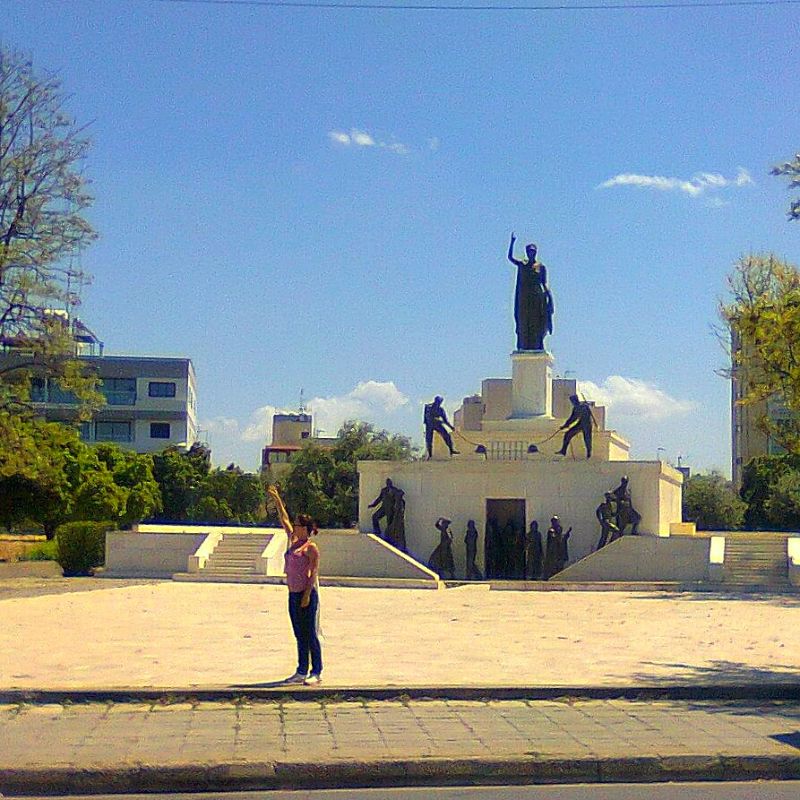
The Green Line
Afterward, the president of the country, Archbishop Makarios, made amendments to the Constitution of Cyprus. It sank the Turks into minority status. As a result, a tense domestic political situation arose, and ethnic unrest erupted in the mixed populations of Cyprus. The conflict resulted in the UN invasion of the island in 1964. They established the so-called Green Line, which passes through the capital of Cyprus. It is called Green Line because of the color of the pen used by the United Nations officer to draw the line on a map.
The war
In 1974, Greek nationalists carried out a coup against Makarios, despite peacekeepers. Bloody conflicts erupted in Turkish-majority areas. In defense of the Muslim minority, the Turkish army launched its operation a few days later. The Greek regime tried unsuccessfully to stop the offensive at sea. Chaos broke out on the island, and both the Greeks and Turks began ethnic cleansing.
Turkish troops soon took control of 37% of the island.
The fighting left the island with a massive refugee problem on both sides.
In 1975, the Turkish Cypriot community declared the Turkish Federated State of Cyprus. In 1983, Turkish Cypriots proclaimed their independence as the Turkish Republic of Northern Cyprus.
Thus, Lefkosia (Nicosia) is the capital of both Cyprus and Northern Cyprus.
Interesting facts about Lefkosia/Nicosia
- Currency: Cyprus is part of the eurozone. Hard currency is more than welcome on the Northern side, too, but the official one is the Turkish lira. But be aware: many items on the Turkish side are priced up in euros compared to the lira. Check the exchange rate carefully if you need to change currency.
- Useful expressions:
Hello is ˝yasaas˝(YAH-sas) in Greek and ˝merhaba˝ in Turkish.
Thank you: ˝efcharisto˝ (Ef-caree-STO) in Greek and ˝tessekürler˝ in Turkish.
- Cyprus is in the UTC+2 time zone. They still observe daylight saving time.
- Climate: The city experiences sweltering, dry summers and pleasant winters, with most rainfall occurring in winter.
- The population is 55,000 in the southern and 61,000 in the northern part.
- It is located on the banks of the River Pedieos.
- According to Greek mythology, Lefkosia was a siren, and her name means: “White State.”
- Lefkosia is the southeasternmost EU capital.
- It has been the capital of Cyprus since the 10th century.
Getting to Nicosia
Nicosia is linked with other major cities in Cyprus via a motorway network. The A1 connects Nicosia with Limassol, the A2 connects Nicosia with Larnaca. You can reach the Troodos mountains by the A9.
You can reach the more remote destinations with a rental car.
Alternatively, you can take the bus. On the one hand, the intercity bus travel is very affordable in Cyprus, and some routes are relatively short. On the other hand, buses leave only a handful of times a day, and during the high season, they can be crowded.
The capital is also linked to the 2 international airports in Larnaca and Paphos.
Nicosia International Airport terminated commercial traffic in 1974; it is the headquarters of the UN Peacekeeping Force in Cyprus within the Green Line buffer zone.
Find flights to Cyprus:
There is no train network in Cyprus.
Getting around Lefkosia
Bus service OSEL (ΟΣΕΛ) provides public transport within the city. Many taxi companies also operate in Nicosia, and taxi drivers must use a meter.
Attractions in the capital of Cyprus
Venetian walls
During the Venetian Rule, the Governors saw it necessary for all the cities of Cyprus to be fortified due to the Ottoman threat. Venetians built the new fortifications of Nicosia, which are well-preserved until today. The new walls took the shape of a star with eleven bastions. The walls have three gates, to the North, the Kyrenia Gate; to the west, the Paphos Gate; and to the east, Famagusta Gate.
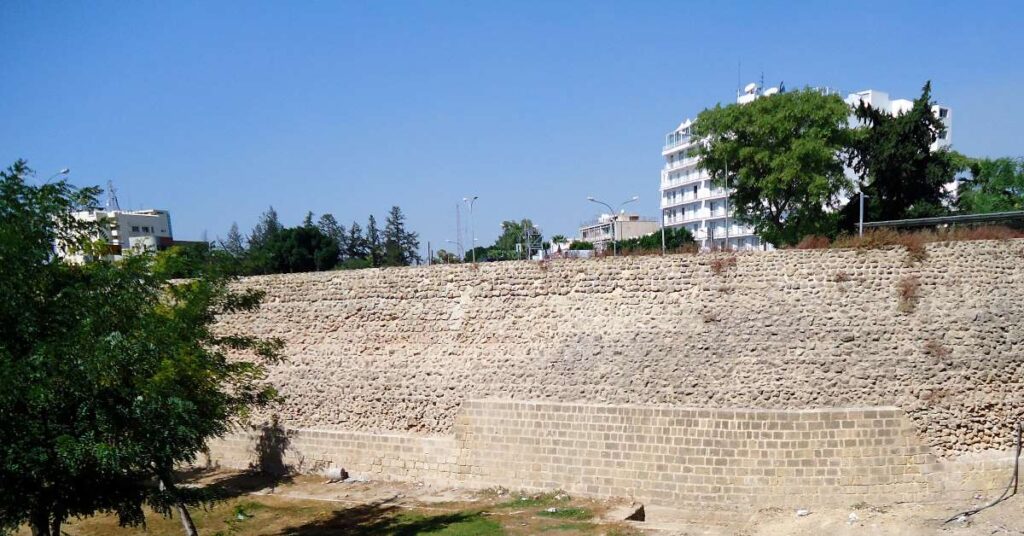
Agia Sophia of Nicosia (Selimiye Mosque)
Agia Sophia of Nicosia (Selimiye Mosque)
Perhaps Nicosia’s most iconic religious building is the Cathedral of Saint Sophia. Historically, it was a Catholic church, and it was converted into a mosque (Selimiye Mosque). During the Ottoman siege of Lefkosia in 1570, the cathedral provided refuge for the residents of Lefkosia. When the city fell, the Bishop of Paphos delivered the last Christian sermon in the building, in which he asked for divine help. Ottoman soldiers broke the door and killed the bishop along with others. They smashed or threw Christian items in the cathedral, such as furniture and ornaments. Then, they washed the mosque’s interior to prepare it for the first Friday prayer.
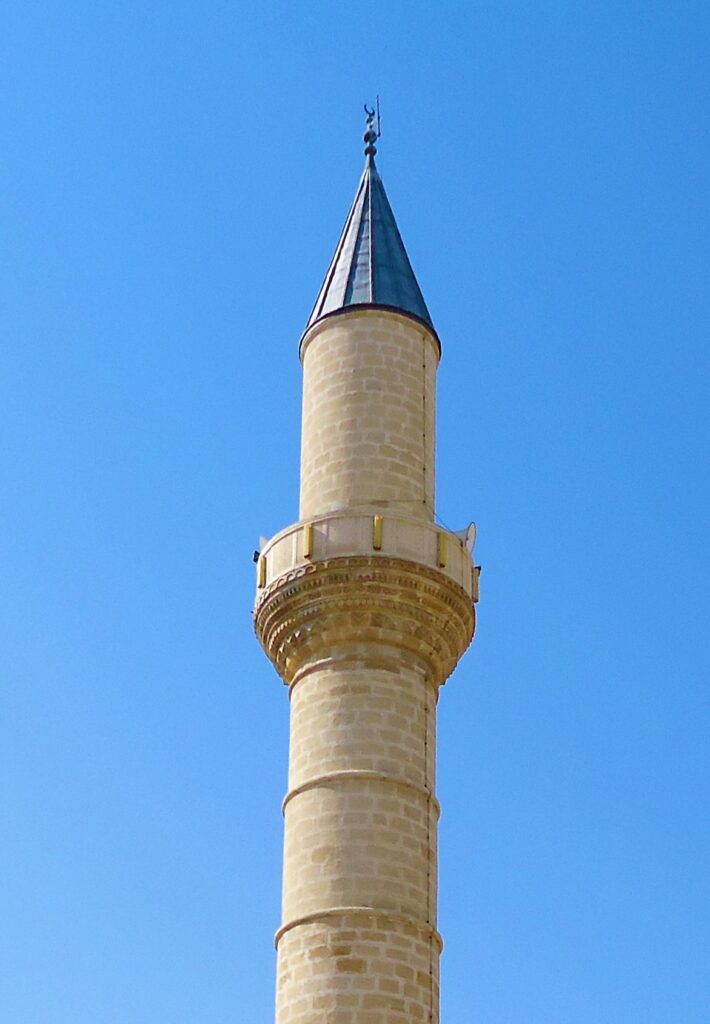
The minaret of the Selimiye mosque was added later.
Ledra Street
Ledra Street is in the middle of the walled city. The street has historically been the busiest shopping street in the capital, and today is a historic monument on its own. It connects the south and north parts of the old city. Its nickname is the Murder Mile. During the second half of the 1950s, nationalist fighters often targeted British colonialists along its course.
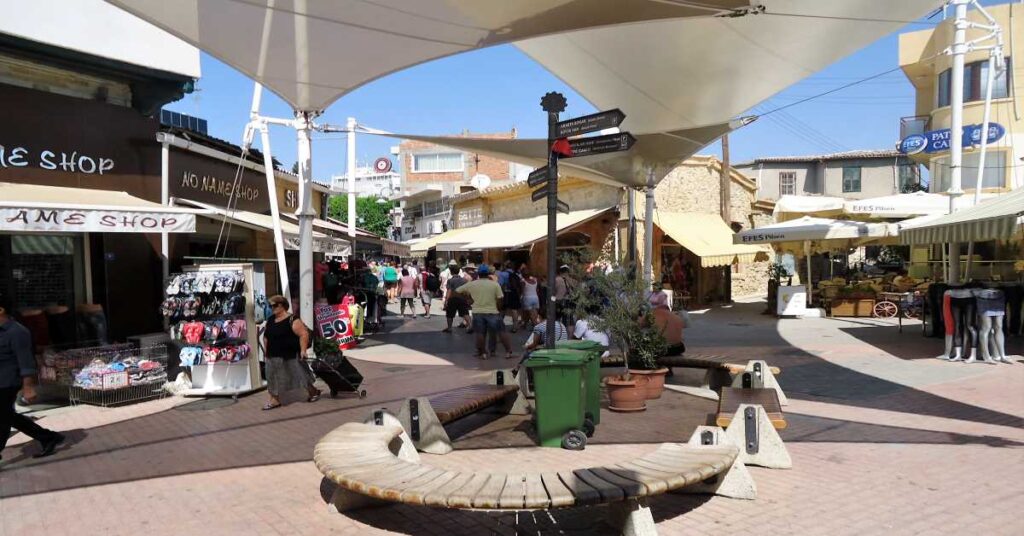





Interesting read, I haven’t been to Cyprus but I had heard about the cultural differences there – however not in as much detail and I didn’t know about the border in the middle of the street. What a unique experience
WOW, this is interesting. I visited Cyprus in 1974 for a few months and left just a few weeks before the invasion. I appreciate the snippets of history that put the Greek-Turkish “tensions” into perspective.